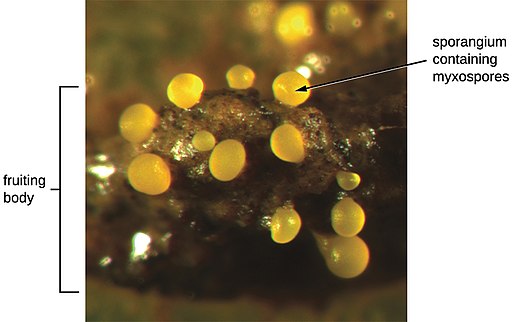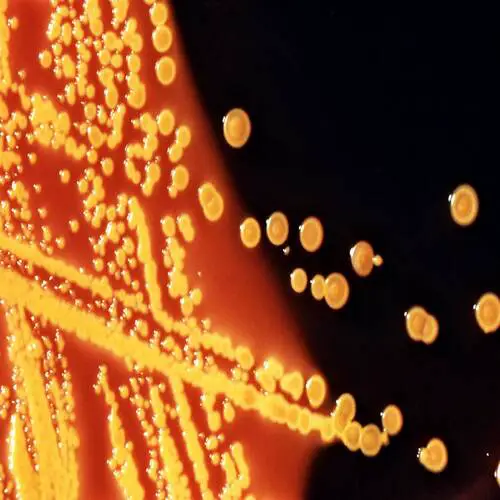Binary Fission
** Definition, Types, Process, vs Mitosis
Definition: What is Binary Fission?
Binary fission is a form of asexual reproduction used by members of domains archaea and bacteria among other organisms. Like mitosis (in eukaryotic cells), it results in cell division of the original cell to produce two viable cells that can repeat the process.
Though the concept of binary fission is similar to mitosis, there are a few major differences between the two. Whereas binary fission is a method of propagation used by bacteria and archaea, mitosis occurs in eukaryotic cells.
Moreover, the two occur for different reasons in cells. However, the two processes go through a number of phases involving DNA division followed by splitting of the cell into two daughter cells.
* Some eukaryotes like paramecium and amoebae can use binary fission as a means of propagation.
Binary Fission Vs. Mitosis
Binary Fission
For simple organisms like bacteria, cell division (for propagation) is dependent on a form of asexual reproduction known as binary fission.
Compared to the cell structure of eukaryotic organisms, the cell structure of prokaryotes (e.g. bacteria and archaea) is very simple. For this reason, they can only reproduce asexually through binary fission, a relatively simple method of reproduction.
During cell division, the DNA molecule of prokaryotes (a single circular chromosome) is first uncoiled before being replicated to produce two chromosomes. The two molecules then start moving to the opposite poles of the cells as the cell pulls apart. This results in the cell increasing in size (length) before ultimately splitting into two.
Before the cell divides into two, cell organelles (e.g. plasmids, ribosome etc) increase in number thus allowing each of the daughter cells to contain approximately equal number of organelles (as well as cytoplasm).
Binary fission in prokaryotes can be divided into four main phases that include:
- Chromosome replication - The single, circular chromosome is uncoiled and copied to form a new chromosome thus doubling the genetic content.
- Cell growth - Following chromosome replication, the cell grows and increases in size in preparation for binary fission. This growth is accompanied by an increase in the volume of the cytoplasm with some of the organelles increasing in number. This phase is also characterized by the two strands starting to migrate to opposite poles of the cells.
- Chromosome segregation - In this stage, the cell elongates as a septum forms at the middle (transversely). It is also at this point that the chromosomes completely separate.
- Cell splitting - In this stage, a new cell wall is formed. Ultimately, the cell splits along the middle (at the septum) dividing the cell into two new daughter cells, each of which contains nuclear material and other cell organelles.
* Organelles such as mitochondria also use this method of cell division (binary fission) to increase in number
* Movement of chromosome strands to the opposite poles of the cell requires energy
* In any of the 4 stages, issues may arise resulting in various abnormalities
There are four types of binary fission that include:
- Irregular binary fission
- Longitudinal binary fission
- Transverse binary fission
- Oblique binary fission

Mitosis
Compared to binary fission, mitosis is a form of cell division that occurs in eukaryotic cells. These are more complex cells (e.g. human cells) that contain the nucleus enclosed in a membrane.
During cell division, the genome is replicated to produce a pair of daughter nuclei that move to the pole ends of the cell. This is followed by division of the cytoplasm and finally splitting of the cell into two.
![Binary fission vs Mitosis, domdomegg [CC BY-SA 4.0 (https://creativecommons.org/licenses/by-sa/4.0)] Binary fission vs Mitosis, domdomegg [CC BY-SA 4.0 (https://creativecommons.org/licenses/by-sa/4.0)]](https://www.microscopemaster.com/images/Three_cell_growth_types.svg.png) Binary fission vs Mitosis, domdomegg [CC BY-SA 4.0 (https://creativecommons.org/licenses/by-sa/4.0)]
Binary fission vs Mitosis, domdomegg [CC BY-SA 4.0 (https://creativecommons.org/licenses/by-sa/4.0)]
Stages of Mitosis
Interphase - This is not necessarily one of the main stages of mitosis. Rather, it is the preparation phase that precedes mitosis.
Once a new cell is formed through mitosis, it has to be ready in order to undergo mitosis and produce new daughter cells as the cycle continues. The cell, therefore, undergoes several phases in interphase in order to be ready for mitosis.
These include:
- G1 phase - The cell grows in size with an increase in the number of organelles as well as the development of various molecular building blocks required for mitosis.
- S phase - This phase is characterized by the development of the DNA molecule in the nucleus as well as the duplication of the centrosome (this is the microtubule structure involved in separating the DNA during mitosis).
- G2 phase - This is the second gap phase (first gap phase being G1) characterized by continued cell growth, production of proteins and organelles as well as content re-organization to prepare the cell for mitosis
Interphase is followed by the M phase (mitotic phase). This is the phase through which the DNA is copied in order to produce the daughter cells. The M-phase consists of two processes that include mitosis and cytokinesis.
Mitosis, also referred to as mitotic division occurs through stages that include:
Prophase - Prophase starts with the nucleus moving to the center of the cell (during pre-prophase). The nucleolus also disappears during this stage followed by formation of the mitotic spindle fibers.
Prophase is also characterized by:
- Tightly coiled chromosomes
- Centrosomes located near the nucleus
- Protein fibers can be seen surrounding the centrosomes (these fibers are involved in the formation of the spindle)
Metaphase - This is the second stage of mitosis characterized by:
- Disappearance of the nuclear envelope
- Growth of the spindle
- Centrosomes start pulling chromosomes to the opposite ends of the cell - This is made possible by contraction of microtubules
- Alignment of chromosomes in the cell's equatorial plate
Anaphase - In this stage (anaphase), the pulling tension of centrosomes separates the chromatids to form two daughter chromosomes. Further contraction of the microtubules (on the centrosomes) not only separates the chromatids, but also pulls them onto the opposite poles of the cell. Later in this stage, the pushing of the polar microtubules contributes to the elongation of the cell.
Telophase - In the last stage of mitosis, the microtubules loosen, which causes the cell to elongate further. With the chromosomes separated at opposite ends of the cell, nuclear envelopes start developing to enclose each of the chromosomes. Before this stage is completed, the chromosomes begin to condense as the nuclear envelope completely encloses the two chromosomes to form two separate nuclei.
Division of the nucleus that occurs during the four stages of mitosis is known as karyokinesis.
Cytokinesis - Like mitosis, cytokinesis is a distinct division-related process of the M-phase. This stage is characterized by splitting of the cytoplasm into two. In animal cells, a contractile ring, along with a cleavage furrow, aids in completely separating the cytoplasm and ultimately making two separate cells.
* Cytokinesis starts just when mitosis is about to end.
Types of Mitosis
In eukaryotic cells, the chromosomes are surrounded by a bi-layer membrane referred to as a nuclear envelope. During chromosome segregation, this membrane may disassemble or remain intact depending on the cell.
This is the basis of two types of mitosis that include:
- Closed division/mitosis - In closed mitosis, the nuclear envelope does not disintegrate. Rather, microtubules separate the chromosomes inside the membrane. This is common in such organisms as algae and fungi to name a few.
- Open mitosis - Open mitosis is common among is various multicellular organisms. Here, the bi-layer membrane disintegrates allowing the microtubules to easily access the nuclear space and separate the chromosome.
* Open and closed forms of division, however, have been identified in a number of organisms including amoebozoa, rhizaria and fungi.
What are the Differences between Meiosis and Mitosis?
Types of Binary Fission
- Irregular binary fission - This is the type of binary fission in which cytokinesis (the division of the cytoplasm) occurs along a plane perpendicular to that of Karyokinesis. Here, the plane of cytokinesis is always perpendicular to plane on which Karyokinesis occurred.
- Longitudinal binary fission - This is the type of mitosis in which fission/cytokinesis occurs along a longitudinal axis.
- Oblique binary fission - This is a type of fission that does not occur in any particular way. As such, it is referred to as oblique fission.
- Transverse binary fission - In this type of binary fission, cytokinesis occurs along the transverse axis.
Differences between Binary Fission and Mitosis
Apart from the fact that binary fission is common in prokaryotes and mitosis in eukaryotes, some of the other major differences between the two methods of cell division include:
- Whereas spindle apparatus are produced during mitosis (to separate chromosomes) they are not formed in binary fission.
- Eukaryotes have cell organelles that double in interphase in preparation of mitosis. However, given that prokaryotes are simpler cells, only ribosome and a few other cell components increase in number before binary fission starts.
- Whereas binary fission is only used as a means of reproduction by prokaryotes, mitosis is used for several functions that include cell replacement, growth and development of the organism.
- Due to complexity of eukaryotic cells, mitosis takes longer than binary fission - Binary fission occurs rapidly.
Binary Fission in Single-Celled Organisms
Binary Fission in Paramecium (Asexual Reproduction)
Paramecium is a genus consisting of such ciliates as Paramecium aurelia, Paramecium bursaria and Paramecium caudatum among many others.
Paramecia (members of the genus paramecium) are shaped like a slipper or sole of a shoe and covered by cilia that allow them to move from place to another and feed.
Unlike Bacteria, paramecium consists of eukaryotic cells which means that they have well-organized cells. Although Paramecia can reproduce sexually, asexual reproduction (binary fission) is the primary means of reproduction that occurs in favorable conditions.
For paramecium, asexual reproduction is in the form of transverse binary fission. While the organism has two nuclei (a large macronucleus and a small micronucleus) it is the small nucleus that is involved/responsible for reproduction.
In favorable environmental conditions (water etc.) the ciliate stops feeding as the oral groove disappears. This is then followed by the micronucleus dividing into two and the two micronuclei moving to the pole ends of the cell.
Once the small nucleus has divided, the macronucleus also divides into two and the two move to either end of the cell. Lastly, cytokinesis occurs along the transverse axis to produce two similar cells (This involves the cytoplasm dividing at the right angle to the long axis of the cell).
* The micronucleus of paramecium divides through mitosis while the larger nucleus divides through amitosis. Here, the genetic material in the nucleus (micronucleus) divides through mitosis. The nucleus goes through four stages of mitosis that include prophase, metaphase, anaphase, and telophase.
* During micronucleus division, all energy is used for separation and duplication. Therefore, cell growth does not occur at this stage.
* While Paramecium also uses a complex method of sexual reproduction, binary fission occurs when the partners (conjugant) separate.
Binary Fission in Bacteria
Bacteria use several methods of asexual methods for reproduction.
These include:
- Binary fission
- Zoogloea stage
- Formation of conidia and gonidia
- Budding
- Fragmentation
Although different types of bacteria can use any of the aforementioned methods, binary fission is the most common method of asexual reproduction that occurs when environmental conditions are favorable (water, optimal temperature range etc).
Binary fission in bacteria involves two main stages that include:
Genome replication
For bacteria, as is the case with Paramecium, binary fission starts with replication of the genome (bacterial chromosome in the nucleoid). Here, replication enzymes copy the chromosome strand starting at the origin of replication then continues separating the strand into two. Replication produces two circular daughter cells as the cell elongates. The origins then move to either end of the cell as DNA is copied.
Septum formation/cell division
During this phase, plasma membrane's peripheral ring invaginates dividing the cell into two. This is also accompanied by the formation of a double-membranous septum before the two cells completely separate into two similar cells.
* Unlike Paramecium, division of the nucleoid does not involve mitosis.
* Under favorable environmental conditions, binary fission may take about 30 minutes.
* Binary fission is susceptible to a wide range of environmental changes. For this reason, other forms of asexual reproduction come to play during unfavorable environment conditions.
Learn more about Bacteria here
Binary Fission in Amoeba
Amoeba is a genus consisting of such eukaryotic organisms as Amoeba proteus. Amoebae lack a definite shape and move through temporary projections known as pseudopodia (false feet).
Like many other eukaryotes, the cytoplasm and cellular contents of Amoebae are contained in a cell membrane while DNA is contained in the nucleus.
For such species as Amoeba proteus, sexual reproduction is achieved through binary fission (a form of asexual reproduction). However, it may also involve multiple fission or sporulation.
As is the case with Paramecium, also a eukaryote, genetic material is replicated through mitosis. Here, the DNA strand goes through the four stages of mitosis (prophase, metaphase, anaphase and telophase).
By the end of telophase, two daughter nuclei are formed with a lattice forming beneath each nuclear membrane. Nucleus division is followed by cytokinesis which divides the cytoplasm and ultimately produces two daughter cells that are almost identical in terms of cellular content.
* Unlike bacteria, multipolar nuclear spindle are produced during binary fission in amoeba.
* Reproduction in amoeba occurs through irregular binary fission. Here, cytokinesis occurs along a plane that is perpendicular to the plane of karyokinesis.
Return to learning about Chromosomes
Return from Binary Fission to MicroscopeMaster home
References
Darpan, Pratiyogita (1999). Competition Science Vision.
Boettcher, Barbara and Barral, Yves. (2013). the cell biology of open and closed mitosis, Nucleus, 4:3, 160-165.
Panawala, Lakna. (2017). What are the Stages of Mitosis. Researchgate Publication.
Links
https://www.thoughtco.com/binary-fission-vs-mitosis-similarities-and-differences-4170307
Find out how to advertise on MicroscopeMaster!





